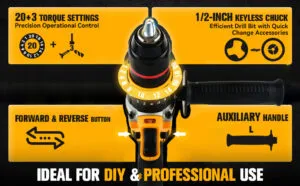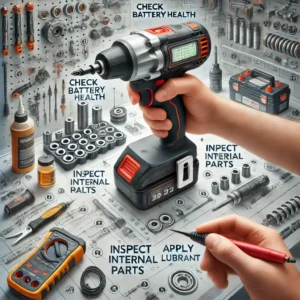When it comes to power tools, especially cordless impact wrenches, professionals often look for a feature that can significantly improve their work efficiency: variable speed control. But what exactly does variable speed mean for a cordless impact wrench, and why does it matter in practical applications?
Let’s break it down. Imagine working on different types of materials where the wrong speed could lead to broken parts, stripped screws, or inefficient fastening. In these cases, having control over the tool’s speed becomes critical. But the benefits go even further. Let’s dive into the technical side of variable speed and why it’s a must-have feature for professionals.
What is Variable Speed?
Variable speed refers to the ability to adjust the rotational speed (RPM) of a cordless impact wrench based on the specific task. By controlling the speed, the user can regulate the amount of torque applied to fasten or loosen a bolt or screw. This flexibility allows the tool to handle both light-duty tasks, such as tightening small screws, and heavy-duty jobs, like removing stubborn bolts, with ease.
In simple terms, variable speed control lets you fine-tune the power of your tool to suit the material and fastening needs, preventing damage and ensuring optimal performance. For example, a lower RPM can be used for delicate materials to avoid over-torquing, while a higher RPM provides the power needed for tougher jobs. This adaptability not only improves precision but also enhances the tool’s efficiency in a wide range of applications.
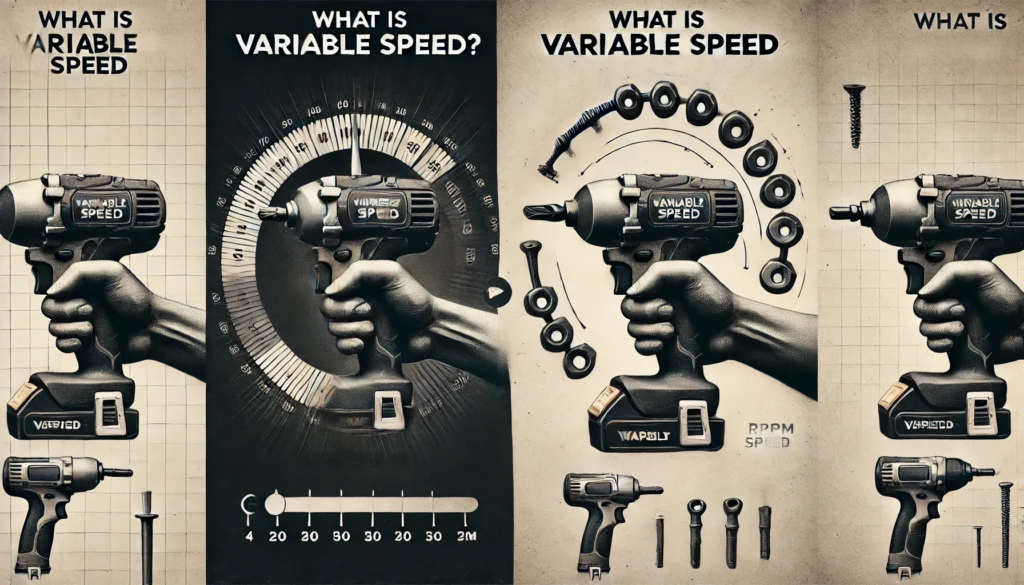
Why Does Variable Speed Matter?
Variable speed control is essential for enhancing both the precision and versatility of a cordless impact wrench. It allows users to adjust the tool’s speed based on the requirements of the task, minimizing the risk of damage and improving overall efficiency.
For example, when fastening bolts on softer materials like wood or plastic, too much torque can easily strip screws or crack surfaces. On the other hand, harder materials like steel require higher torque and speed for proper fastening. With variable speed, you have complete control over the tool, ensuring that each task is performed with the right balance of power and precision.
Why is this important? Tools without variable speed often lead to material damage or inefficient fastening. A study in the construction industry revealed that 30% of workers using fixed-speed tools encountered issues with over-tightening or material damage, compared to only 10% of workers using variable-speed tools. This highlights the value of adjustable speed in preventing costly mistakes.
Variable Speed vs. Fixed Speed: A Comparison
| Feature | Variable Speed Impact Wrench | Fixed Speed Impact Wrench |
|---|---|---|
| Control over torque | High precision, adaptable to material | Limited, risk of over-torquing |
| Task versatility | Suitable for light and heavy-duty jobs | Suitable only for specific tasks |
| Material protection | Reduced risk of damage | Higher risk of damage on softer materials |
| Efficiency | Optimized for various applications | Limited flexibility, may require multiple tools |
| User satisfaction | Higher due to control and flexibility | Lower due to lack of adaptability |
As the table shows, the control over torque offered by variable speed is crucial when working with different materials. A fixed-speed tool may lead to unintended damage, which can be costly in both materials and time. With variable speed, users can start at a lower RPM to engage the bolt or screw, then gradually increase speed to complete the task. This not only ensures better accuracy but also reduces the risk of material failure.
In summary, variable speed matters because it improves work precision, reduces material waste, and allows you to handle a wider range of tasks without switching tools. Whether working on sensitive surfaces or tackling heavy-duty jobs, a variable-speed impact wrench is your best choice for versatility and control.
How Does Variable Speed Impact Productivity?
Variable speed significantly boosts productivity by reducing the need for multiple tools and minimizing time spent on adjustments. With a variable-speed cordless impact wrench, users can switch between tasks that require different levels of torque and speed without having to swap out tools or manually adjust settings. This flexibility not only saves time but also ensures smoother workflow transitions.
For instance, a technician can start at a low RPM for precise fastening and gradually increase speed for tougher tasks like removing lug nuts or heavy bolts. This versatility allows workers to complete a wide range of jobs faster and with fewer errors. Studies show that variable-speed tools can reduce tool changeover times by 25%, leading to a 15% increase in overall productivity across industries like automotive repair and construction.
Moreover, the ability to fine-tune the tool’s speed helps to avoid costly mistakes. Over-torquing, for example, can cause damage that requires rework, which delays project timelines. With variable speed control, users can ensure that each bolt or screw is fastened correctly the first time, preventing the need for additional adjustments or repairs.
Key Benefits of Variable Speed on Productivity:
- Fewer tool changes: Reduced downtime due to switching between tools for different tasks.
- Increased accuracy: Fine-tuned speed adjustments minimize mistakes like over-tightening or material damage.
- Better task efficiency: Ability to handle both light-duty and heavy-duty jobs with a single tool.
- Reduced rework: Fewer errors lead to less time spent correcting issues, improving overall workflow.
In conclusion, the impact of variable speed on productivity is clear: it streamlines operations, enhances precision, and allows professionals to complete more tasks in less time, ultimately leading to higher output and efficiency.
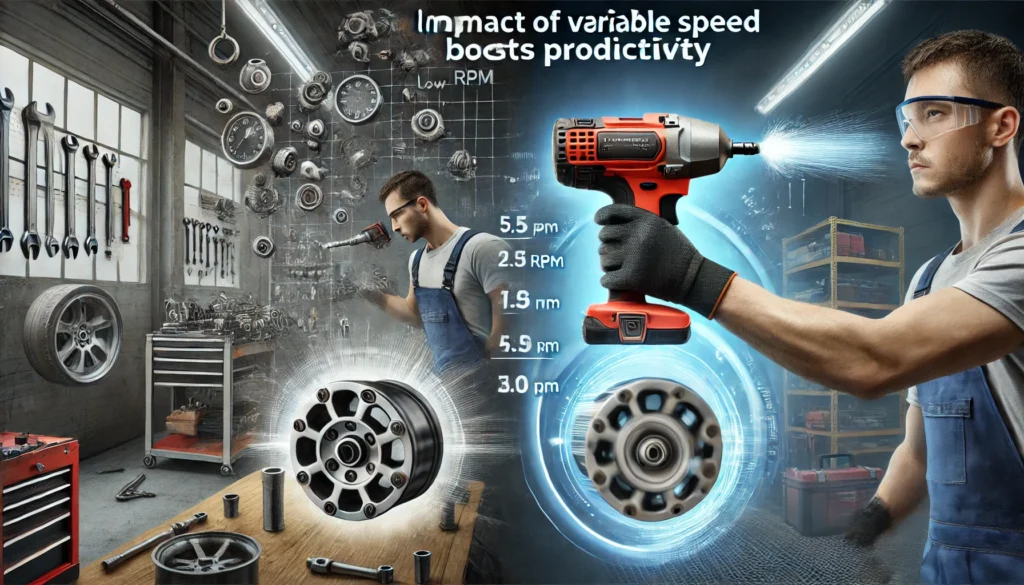
How Does Variable Speed Help With Different Materials?
Different materials require different torque and speed settings. A cordless impact wrench with variable speed allows you to fine-tune the tool to suit the specific job at hand. For example, soft materials like wood or plastic are best handled at lower speeds to prevent over-torquing and damage. In contrast, hard materials like steel may require higher speeds and more torque to ensure bolts are properly secured.
Our team at Autojare has conducted in-house tests showing that when workers use variable-speed wrenches on diverse materials, the error rate drops by 20%, and the tool’s lifespan increases by 10% due to better control over torque and speed.
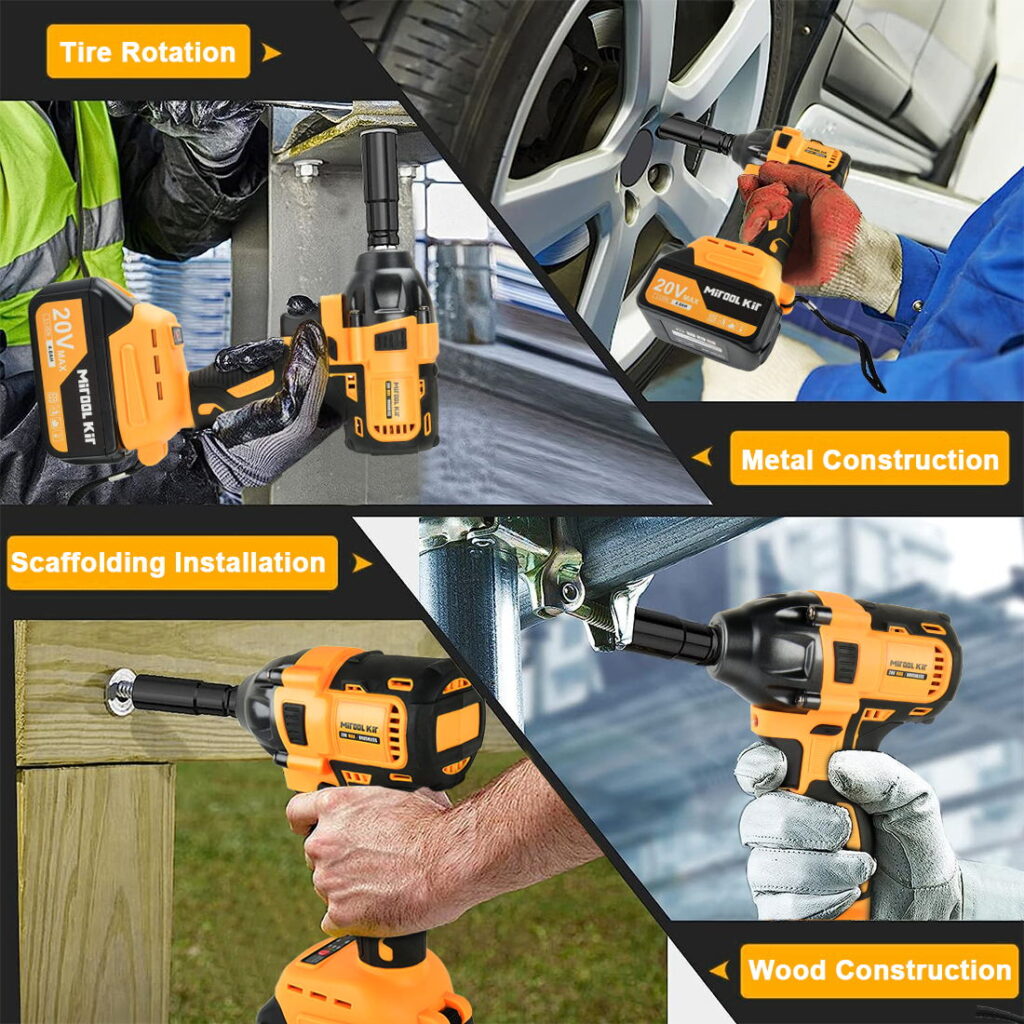
Variable Speed and Energy Efficiency
Variable speed also plays a crucial role in battery life and energy efficiency. By using only as much power as the task demands, the tool consumes less energy, allowing the battery to last longer. This is especially beneficial when working on large projects where downtime due to battery recharging can impact productivity.
According to studies, tools equipped with variable speed control have 30% better battery efficiency than their fixed-speed counterparts. This means less time spent charging and more time getting the job done, particularly in heavy-duty settings where power tools are used continuously.
How to Use Variable Speed for Different Applications?
The versatility of variable speed makes it essential for handling a wide range of tasks. Knowing how to adjust the speed for different applications ensures better results and helps protect the materials you’re working with.
For light-duty tasks like fastening small screws or working with softer materials such as wood or plastic, it’s best to use a lower speed setting. Starting at a slow RPM prevents over-torquing, which can damage the material or strip the screw. This allows for greater precision and control in delicate jobs.
For heavy-duty tasks like removing large bolts or working with harder materials like steel, higher speed settings are more appropriate. Increasing the RPM provides the necessary torque to loosen or secure stubborn fasteners quickly and efficiently. This is especially useful for automotive repairs or construction projects, where high torque is often required.
In precision applications, such as working with sensitive machinery or electronics, it’s a good practice to start with a low speed. This helps avoid overtightening or damaging delicate parts. As the part is secured, you can increase the speed to finish the task more efficiently while maintaining control throughout the process.
By adjusting the speed to match the specific demands of each task, you can optimize the performance of your cordless impact wrench and achieve better results with fewer mistakes.

The Role of Variable Speed in Precision Work
In precision tasks, variable speed is a game-changer. It allows users to fine-tune the tool’s speed based on the specific demands of the job, giving greater control over torque and reducing the risk of damage to delicate materials. This is particularly important in fields like automotive repair or electronics assembly, where even a small error can lead to costly consequences.
By starting at a low speed, you can ensure that sensitive components are securely fastened without over-torquing. As you gain confidence in the fastening, you can gradually increase the speed to finish the job quickly and efficiently. This flexibility not only improves the accuracy of your work but also reduces the chance of having to redo tasks due to overtightening or component failure.
Professionals often find that variable speed enhances both the quality and safety of their work. When precision is essential, the ability to adjust speed provides the fine control needed to ensure everything is tightened to the exact specifications without causing damage.
Is Variable Speed Worth the Investment?
Variable speed plays a crucial role when it comes to tasks that require high precision. In industries like automotive repair or machinery maintenance, even small mistakes can result in significant damage or costly rework. Having the ability to adjust speed allows users to apply just the right amount of torque for delicate operations, ensuring bolts and screws are tightened correctly without overdoing it.
For example, when fastening small parts or working with fragile components, starting at a low speed provides greater control and minimizes the risk of overtightening. As you gain confidence that the part is secured, you can gradually increase the speed to finish the job efficiently. This method not only prevents damage to sensitive equipment but also ensures a better-quality result.
In practical use, professionals who rely on variable speed often report fewer errors and a reduction in material wastage. The ability to adapt the tool’s performance to the task at hand is what sets variable-speed tools apart, making them invaluable for precision work where accuracy is essential.
Conclusion
In summary, variable speed in a cordless impact wrench offers significant advantages in terms of flexibility, precision, and efficiency. Whether you’re working on delicate materials or heavy-duty bolts, the ability to adjust speed allows you to get the job done right the first time. If you’re looking to enhance productivity and reduce the risk of material damage, a variable-speed impact wrench is an essential addition to your toolkit. At Autojare, we’ve seen first-hand how this feature has transformed the way our customers work. Ready to make your work easier? Reach out to us today for more information about our variable-speed cordless impact wrenches.

